Agricultural Products Lists
-
Identification and Control of Rice Diseases and insect pests (2)
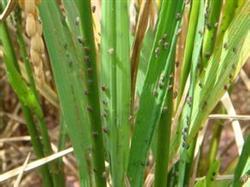
Rice brown planthopper is also known as brown planthopper, commonly known as Ascaris lumbricoides, soft shell Ascaris, Ascaris, midges. Scientific name Nilaparvatalugens (Stdl) Homoptera, Homoptera. Brown planthopper (Nilaparvata lugens) is one of the main rice pests in China.
2018-09-13 -
Control of three main diseases of soybean
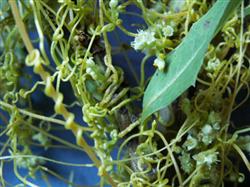
What does soybean dodder look like? What if soybean dodder happens? Dodder is also known as yellow rattan and tangled rice seedlings. It's a malignant weed. It harms a variety of crops and can cause the loss of soybean production, which is common in all parts of the country. (1) Morphology: the stem of soybean cocoon silk is yellow, orange or yellowish green, smooth and glabrous.
2018-09-13 -
Matters needing attention in Young panicle differentiation of Rice

Matters needing attention in Young panicle differentiation of Rice
2018-09-13 -
Common knowledge of Rice Black-streaked Dwarf Disease in South China
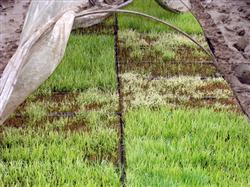
Rotten rice seedlings are the general name of rotten seeds, rotten buds and dead seedlings that occur in the seedling stage. Rotten rice seedlings can be divided into two types: physiology and infectivity. Physiological rotten seedlings are mainly caused by low temperature and poor management measures, infectious rotten seedlings are caused by pathogen infection, and the main diseases are rice cotton rot, rice rot and rice.
2018-09-13 -
Diagnosis and control of rice seedling rot
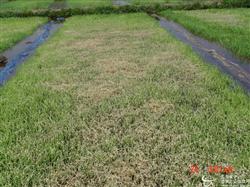
Rice seedling rot is a general term for rotten seeds, rotten buds and dead seedlings caused by pathogen infection or non-pathogen influence. It can be divided into two categories: infectious and non-infectious (physiological). Non-infectious rotten seedlings mainly refer to those caused by adverse environment; infectious rotten seedlings refer to those caused by adverse environment, such as Pythium, Fusarium, etc.
2018-09-13 -
Rice seed soaking technique
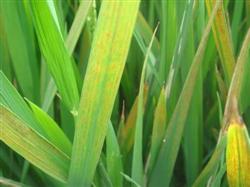
Rice premature senescence refers to the premature senescence of rice leaves from heading to maturity, brown leaves, dirty white death at the top of the leaves, thin and curved leaves, weak root growth, and even a few black roots. There are many factors causing premature senescence of rice, except for diseases and insect pests, there are mainly the following.
2018-09-13 -
Prevention and treatment of Blackfoot Disease starts with seed dressing of Wheat
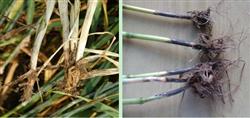
Wheat total erosion disease, also known as Blackfoot disease, is a devastating disease in wheat production. After the wheat was infected, the tillers decreased, the spike rate decreased, the 1000-grain weight decreased, the light ones reduced the yield by 10% to 20%, the heavy ones reduced the yield by more than 50%, or even no harvest. Wheat can be damaged during the whole growth period, but it is affected by seedling stage and seedling height of 15 cm.
2018-09-13 -
Control of wheat sheath blight by early application of Thiofuroamide in spring
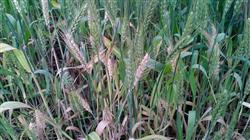
In recent years, the planting area of direct-seeding rice in northern Jiangsu and other places is relatively large, which leads to the late sowing date of wheat. In order to ensure the yield of late sowing wheat, the seeding amount is often greatly increased. The seed amount per mu of high fields is 20~30 kg. The wheat seedlings in the field grow too densely. With the spring temperature rising, the wheat quickly recovers its growth.
2018-09-13 -
How to improve the seed setting rate of sunflower

How to improve the seed setting rate of sunflower
2018-09-13 -
What is wheat rust like?
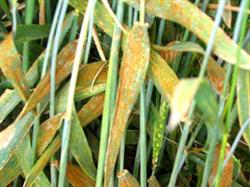
What is wheat rust like? Wheat rust is also called jaundice. There are three kinds of stripe rust, leaf rust and stem rust. It is the most widespread and most harmful disease in wheat. After wheat is infected with rust, chlorotic spots appear on the surface of wheat leaves or straw at the initial stage, followed by yellow or reddish-brown pink blisters.
2018-09-13 -
Control methods of Wet damage to Wheat
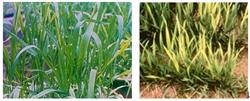
The symptoms of boron deficiency in wheat generally appear first in the new tissue, showing that the terminal bud is easy to die, the flowering duration is long, sometimes tillering while heading, the growth period is prolonged, the stamen is dysplastic, the anther is thin, the empty chaff does not crack, does not disperse the powder, the pollen is few or deformed, the ovary expands transversely, the glume does not close before and after, and wilts in the later stage.
2018-09-13 -
Comprehensive control methods of wheat take-all disease

Wheat total erosion disease is a typical root disease, which can be infected from sowing to harvest. The main site of the disease was in the root of wheat and the 1-Murray 2 node at the base of the stem. After infection, the roots blackened and rotted, lost the ability to absorb water and nutrients, and caused the aboveground parts to dry up and die, resulting in white ears. One.
2018-09-13 -
Pay attention to the occurrence of diseases and insect pests in wheat seedling stage
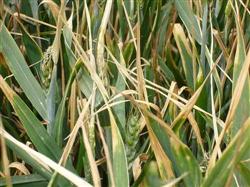
In recent years, the symptoms of withered spike often occur in some plots of wheat at milk stage, which has a great influence on the yield and quality of wheat. The main causes of wheat white spike are diseases and insect pests, such as sheath blight, root rot, total erosion, scab, wheat stem fly, wheat stem moth, golden needle worm and so on. Caused by different diseases and pests.
2018-09-13 -
Occurrence and Control Countermeasures of Wheat Yellow Dwarf Disease
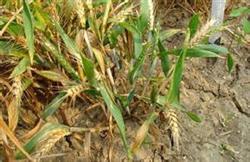
Wheat yellow dwarf disease is a viral disease mainly transmitted by aphids, and its damage is quite serious in some years. When the symptom is susceptible to disease at the seedling stage, the leaves lose green and turn yellow, and the plants are seriously dwarfed, and the leaves of seriously diseased plants often cannot survive the winter, or cannot jointing and heading after overwintering. The dwarfing of the late susceptible plants was not obvious, and the upper part.
2018-09-13 -
The method of accelerating germination of Peanut

The method of accelerating germination of Peanut
2018-09-13 -
How to cultivate strong seedlings of rapeseed
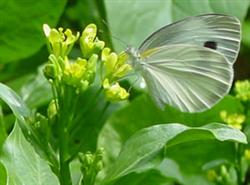
The scientific name of rape pink butterfly Artogeia (Pieris) rapae (Linnaeus) is Lepidoptera, Pteropteridae. Synonym Artogeiarapae (L.). Alias White Butterfly, White Butterfly. The larvae are called cabbage insects. Distributed all over the country. Host rape, cabbage, cauliflower, cabbage, radish and other cruciferous vegetables.
2018-09-13 -
Causes and Solutions of Peanut empty Shell

Causes and Solutions of Peanut empty Shell
2018-09-13 -
Field Management of Rice in Summer

Field Management of Rice in Summer
2018-09-13 -
Key points in the management of cotton boll opening period

Key points in the management of cotton boll opening period
2018-09-13 -
Re-application of Boron in rape with High quality, High yield and stable yield
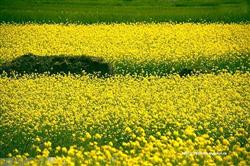
Rapeseed (Brassica napus L.) is a boron-demanding crop, especially high-yield and high-quality Brassica napus "double-low" hybrid rape is particularly sensitive to boron deficiency, slow rooting at seedling stage, dark green, wrinkled leaves and hindered growth; boron deficiency at bud stage, rhizome expansion, leaf color turning purple to blue-purple, abnormal flower bud development; boron deficiency at flowering stage, plant dwarfing, pollen.
2018-09-13
